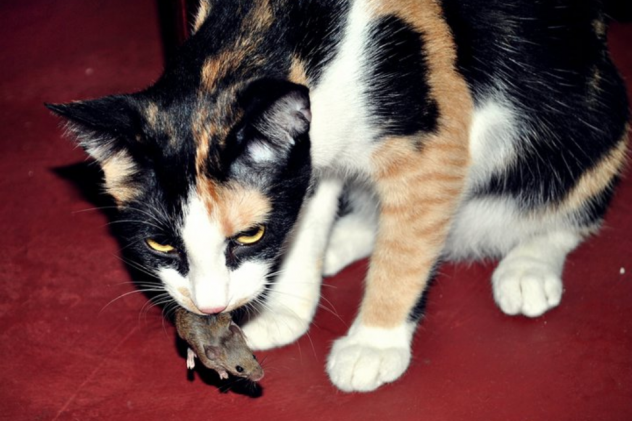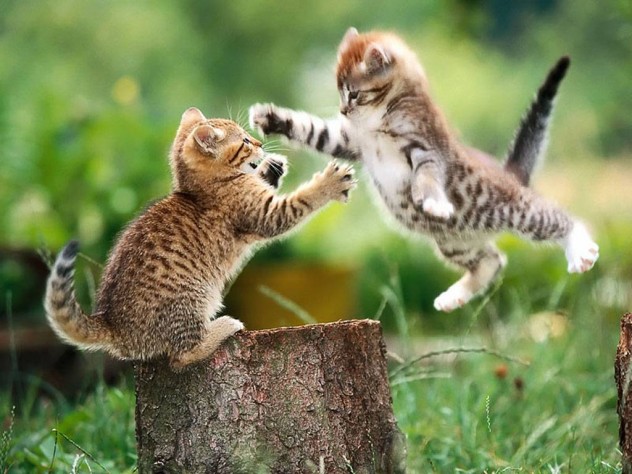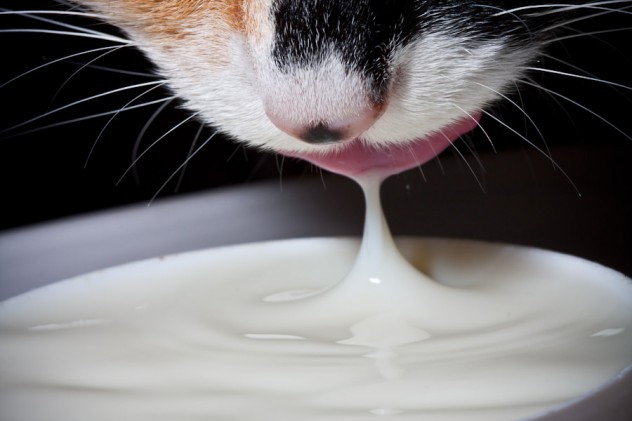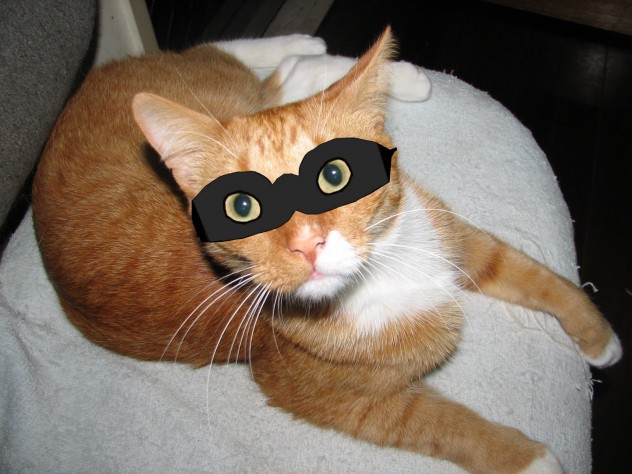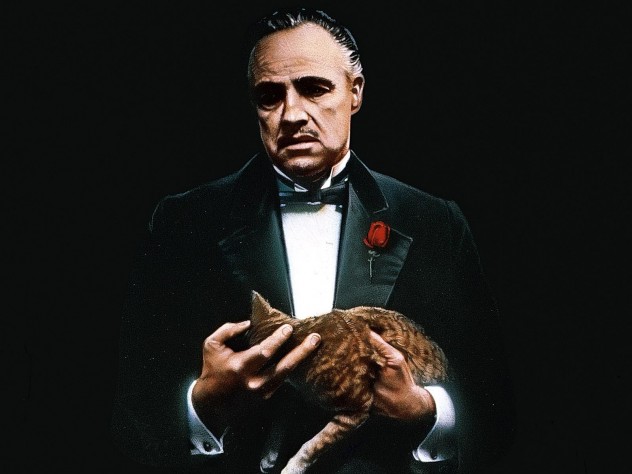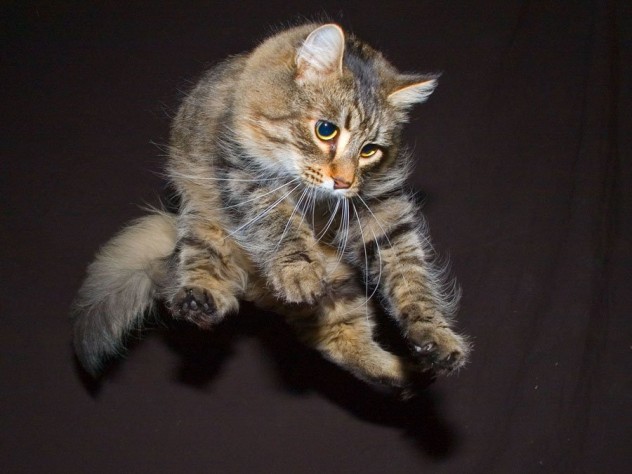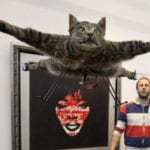10 Mousers
Cats were first domesticated for their appetite for mice and rats. Today, the average pet owner is content to have kitty do little more than nap, but the cat still possesses a fierce hunting instinct. Those who allow their cats to roam outside will often attest to receiving “gifts” on the welcome mat, the corpses of birds and rodents their pet has hunted down. Even today, cats are employed to kill off rats and mice at such places as Disneyland and the State Hermitage Museum in Moscow, Russia. Although history has likely graced us with even more voracious hunters, The Guinness Book of World Records recognizes Towser, the Glenturret cat, as the world mousing champion. A female long-haired tortoiseshell, Towser (who lived nearly to her 24th birthday), was stationed in a distillery in Crieff, Scotland, the home of Famous Grouse whisky. During her reign, she killed some 28,899 mice (per Guinness record). Towser’s successor at Glenturret was a cat named Amber, who, despite a nearly 20-year career of her own, was not known to have caught a single mouse.
9 Mating
Anyone who has ever owned a female cat that wasn’t fixed can probably attest to the absolute misery of her heat cycles. She will yowl and constantly attempt to escape the house to meet up with suitors. Male cats who can sense her eagerness will gather around, waiting for their opportunity. The actual mating process is a lurid exchange, as far removed from romance as imaginable. The female looses dreadful screams during the encounter, and for good reason: a male cat’s penis is less an instrument of pleasure than a object of medieval torture. It sports backward-facing barbs like fish hooks made of keratin that rake the inside of the female’s vaginal canal. This agonizing part of the courtship is thought to bring on ovulation.
8 Roadkill
It is probably inevitable that at some point in your life, you will run over an animal while driving. For most, it is a sickening feeling, and we will pull over to do anything we can to help, especially if the animal is obviously a pet. Unfortunately, there are a shocking number of people who will continue on their way even after hitting people, let alone a pet. In the UK, it is illegal not to report a car accident involving a dog, or even a farm animal, but strangely enough, there is no legal obligation to stop if one strikes a cat.
7 Milk
Although your average cat will lap up a saucer of milk like it’s sweet ambrosia, the fact is, they are lactose-intolerant. Like some humans, as they grow, cats stop making the enzyme lactase, which breaks down their mother’s milk. What your friend leaves behind in the litter box after this treat will likely convince you to never give her this treat again. Strangely enough, your cat (and his mortal nemesis, the rat), has kidneys efficient enough to allow it to drink seawater to rehydrate, unlike most species.
6 Heroes
Dogs are well known for tales of lifesaving heroism, but most people think cats seem generally too self-involved for valor. In practice, this is hardly the case. In 2012, a cat that had only been rescued from the Humane Society hours before managed to save its new owner’s life when she had a diabetic seizure. The cat leaped onto her chest as she lost consciousness, nudging and biting at her face until she awoke. The cat then darted into the woman’s son’s room and pestered him until he woke up to call for help. An even more unbelievable story emerged from Argentina in 2008, when a one-year-old boy was found by police in the city of Misiones, being kept alive by a band of feral cats. The boy, who’d been separated from his homeless father, would likely have died without the intervention of the cats. They snuggled up to him at night to keep him warm and brought him scraps of food. When police approached, the baby’s guardians hissed and spat ferociously at them.
5 Savannah Cat
The tradition of mating domestic cats with their wild ancestors goes back over a hundred years, when the first Bengal cats (domestic felines crossed with Asian leopard cats) were produced. However, despite their exotic appearance, Bengals are for the most part many generations removed from the jungles of their forebears, and possess a devoted, genial nature. The serval is a small, leopard-spotted African cat between 20 and 40 pounds, perhaps best known for its extremely long legs. Unlike many wild cats, servals can make good pets. In 1986, the first domestic cat was crossed with a serval, producing the Savannah cat. Since becoming available to the public in the ’90s, the Savannah has enjoyed a growing popularity. Owners claim that Savannah cats have a temperament akin to dogs; they tend to follow their masters and can even be taught to walk on a leash and play fetch. They have incredible leaping ability and many seem to love water. Depending on your locality, it may be illegal to keep one of these cats. Australia in particular, which already has a terrible problem with feral cats decimating native fauna, has banned the importation of Savannah cats. And even if regulations allow you to have one of these beautiful exotic pets, you’d better have deep pockets if you want one—depending on the amount of serval in the bloodline, they can sell for well over $10,000 each.
4 The Godfather
The Godfather is recognized as one of the greatest films in history, ranked at No. 2 behind Citizen Kane by the American Film Institute. The winner of three Academy Awards, including Best Picture, Best Actor, and Best Adapted Screenplay, every aspect of the movie has been exhaustively studied, especially the marble-mouthed patriarch, Vito Corleone. When we are introduced to the ruthless mob boss, he is decked out in a tuxedo, celebrating his daughter’s wedding, absently stroking his cat. It is a powerful moment, the dichotomy of the Don’s ruthless power and his tenderness toward his pet. It was, however, entirely accidental. The cat did not feature in the screenplay at all—it was a stray that had wandered onto the set. Marlon Brando picked it up to play with it, and the rest is cinematic history.
3 The Black Death
Gregory IX was Pope from 1227 until his death in 1241, his reign characterized by provoking crusades and brutal inquisitions against those deemed heretical. He also seemed to be convinced that the people were worshiping black cats as manifestations of the devil. His influence led to large-scale massacres of cats throughout Europe, a campaign which would go on to have horrible, unforeseen consequences 100 years later. In the late 1340s, when rats infected with the Black Plague swept out of Asia, they found Europe to be a veritable utopia, unprotected by the cats that would have thinned their ranks (and likely saved millions of lives). Thankfully, recent popes have been more tolerant of cats. Pope Benedict was known to have a particular affinity for felines, who would follow him around the Vatican grounds.
2 Declawing
Like the cropping of ears and the docking of tails in dogs, declawing cats is a hot-button issue in the pet community. While many owners who have come home to find a shredded couch might believe that declawing is a reasonable solution to their problem, the surgery required to remove the claws is quite brutal. Because the nail grows out of the bone, the veterinarian is required to cut off the end of the cat’s toe, something akin to snipping your fingers off at the first knuckle. Declawing is a relatively common process in the US, with only a few localized areas outlawing it (such as the city of San Francisco), but it is seen as animal cruelty and is illegal in several countries throughout the world, including most of Europe, Israel, Brazil, and Japan.
1 Nine Lives
The phrase “cats have nine lives” has become such a common part of the vernacular that few pause to consider its implications. The cat, with its speed and uncanny agility, would seem to defy death at every turn. The animal’s greatest accomplishment would seem to be its ability to regularly survive falls from any height. Human beings, for want of comparison, are terrible at falling. Although there are cases of people surviving insane tumbles (in 1972, stewardess Vesna Vulovic lived after falling over 9,000 meters—30,000 feet—from a damaged plane), a human is generally in big trouble after about three stories. A falling cat has several mechanisms for survival. Perhaps most importantly, its sense of balance acts as a sort of internal gyroscope called “aerial righting reflex.” After dropping a few feet, it is all but guaranteed to land on all fours. The cat’s loose, muscular legs act as springs upon landing, distributing the sudden impact. Being relatively lightweight, the cat has a much lower terminal velocity (the maximum speed at which it can fall) than a human: cats reach about 60 mph; humans easily double that. This is more than mere conjecture; there are dozens of reports of cats falling from enormous heights and walking away with little more than bruises. In 2011, an elderly cat named “Gloucester” fell 20 stories from an Upper West Side, Manhattan apartment with minor injuries. The following year, a cat in Boston (named “Sugar”) tumbled 19 floors. In 2009, another Manhattan cat fell an astonishing 26 floors, this time with photo evidence taken by nearby window washers. This fortunate feline’s name? “Lucky.” Mike Devlin is an aspiring novelist.
